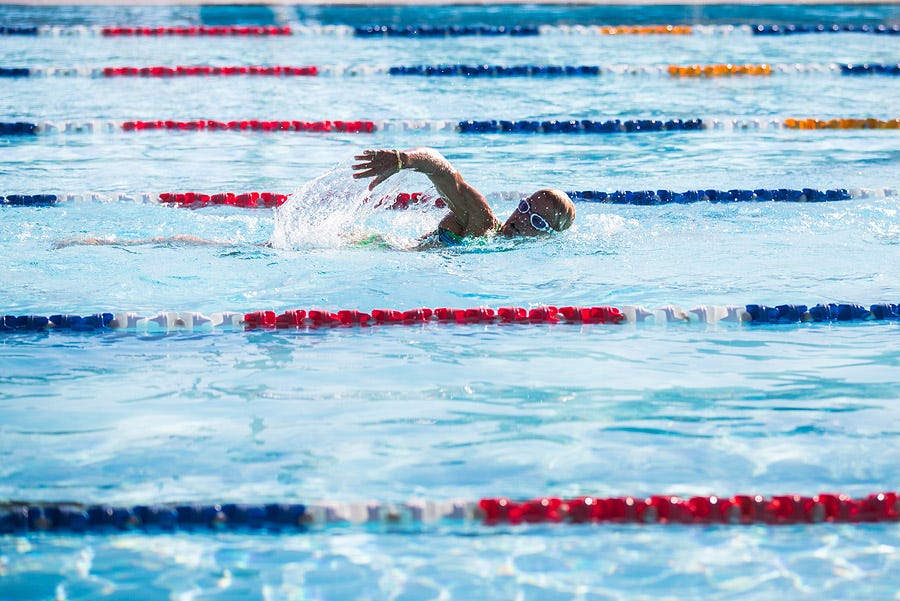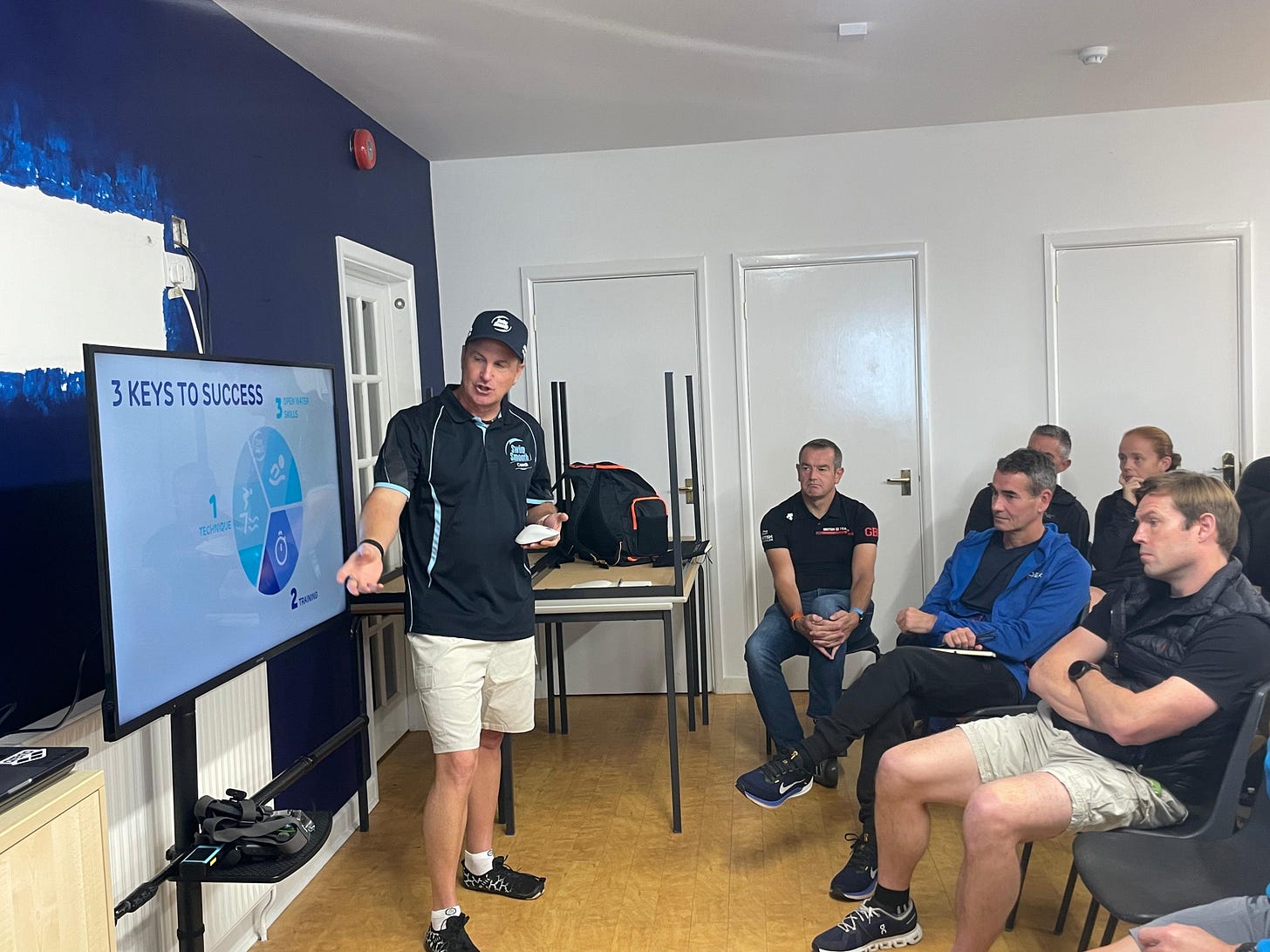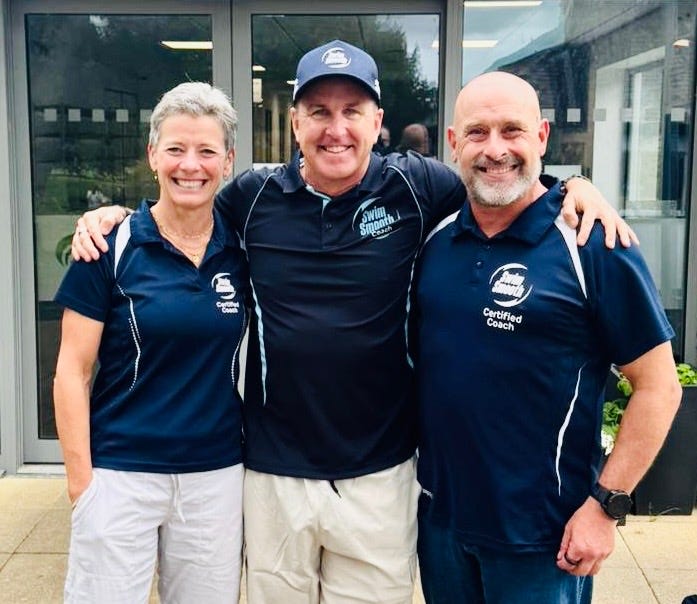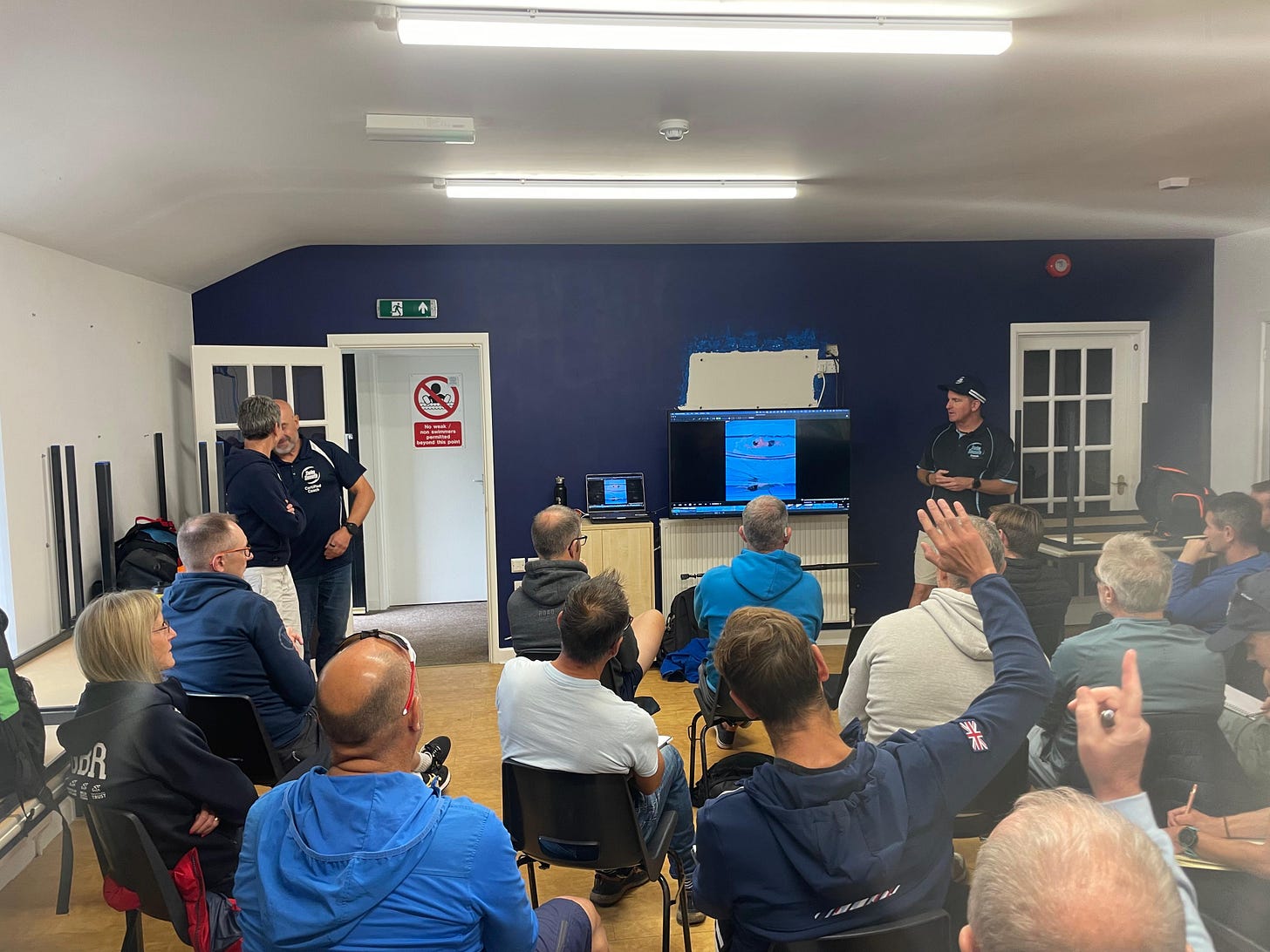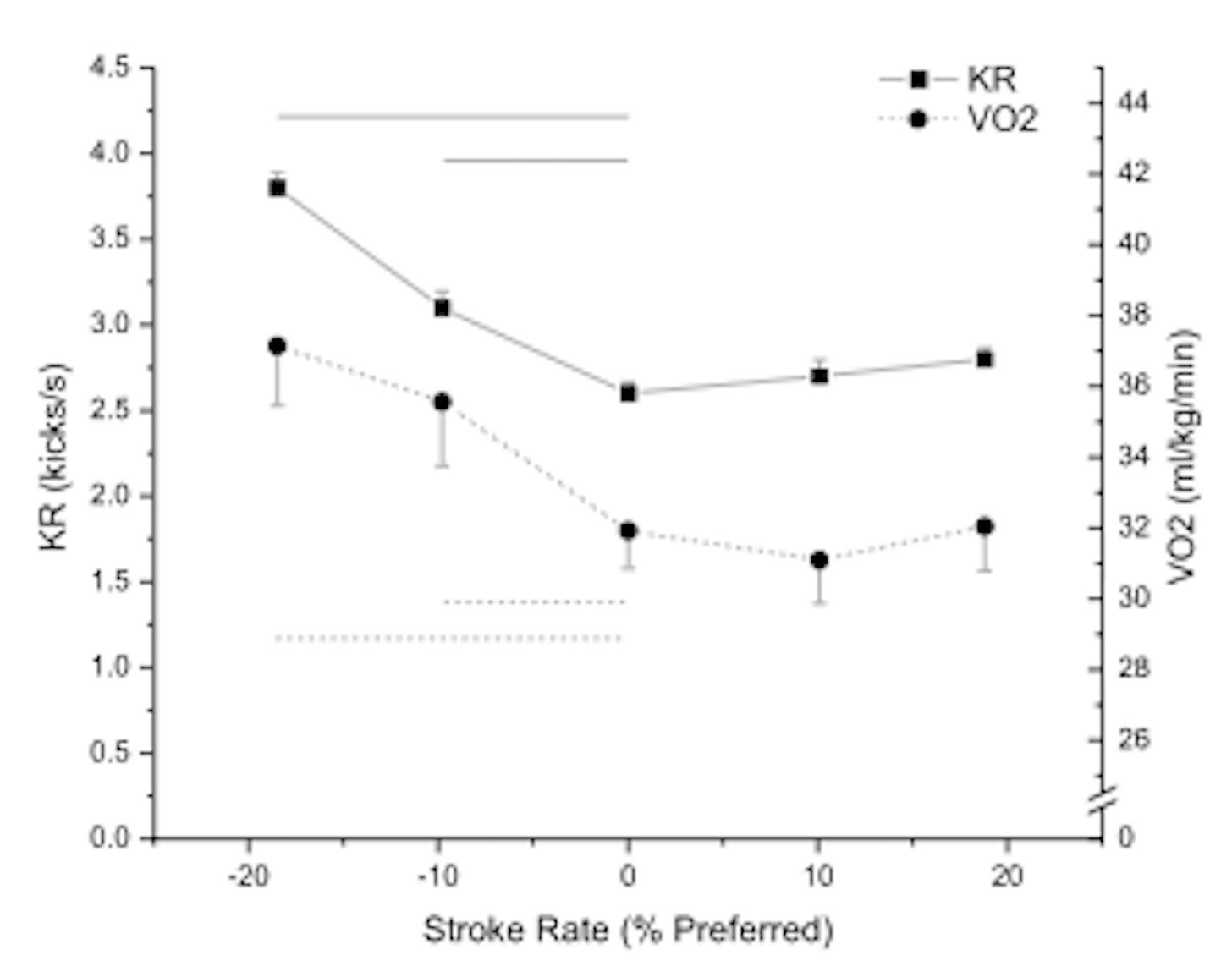One for the Overgliders
What Science Tells Us About Stroke Rate and Efficiency
Hey Swimmers,
Last Tuesday (16th September) I had the privilege of leading an exclusive British Triathlon Coaches Workshop at Mount Kelly College in Devon.
We welcomed 26 passionate coaches from across the UK on very short notice, with some travelling as far as Inverness to be there. It was an energising morning of discussion, demonstration, and discovery.
A special shout-out goes to two outstanding Swim Smooth Certified Coaches — Ed Collins and Alison Smith — who joined us and lent their expertise throughout the day.
Their input and support added so much value to the experience. Together, we explored how modern swim coaching has evolved: from underwater video analysis and real-time feedback to integrating Swim Smooth’s resources into everyday coaching practice.
We decoded freestyle, looked closely at the most common stroke faults among triathletes, and rounded things off with a live poolside video analysis session with 2025 Weymouth 70.3 Champion, Kerri-Ann Upham:
It was a morning that truly showcased the intersection of science, practice, and coaching artistry.
Reflecting on this workshop reminded me of an email we once received from Laura Quilter, a coach and former elite swimmer in New Zealand. She thanked us for challenging her assumptions — particularly around the idea of gliding and long strokes being the hallmark of efficiency. For years, this was the narrative she heard as an athlete. Encountering a more scientific, evidence-based approach to stroke efficiency shifted her entire perspective as both a swimmer and a coach. That spirit of questioning and evidence-led coaching is exactly what we try to nurture in sessions like Mount Kelly.
And so, this week’s article couldn’t be more fitting. It looks closely at the science of stroke rate and efficiency — and why one of swimming’s most entrenched ideas doesn’t stand up to scrutiny.
If you’ve ever thought that gliding further between strokes automatically makes you a more efficient swimmer, this one’s for you.
A 2010 study published in Medicine & Science in Sports & Exercise asked a simple but important question: What happens to oxygen uptake when stroke rate is manipulated in freestyle swimming at a constant speed?
The findings challenge a common misconception—and offer strong support for some of the fundamental principles behind the Swim Smooth coaching philosophy.
The Study at a Glance
Title: Oxygen Uptake Response to Stroke Rate Manipulation in Freestyle Swimming
Researchers: McLean, Palmer, Ice, Truijens, and Smith
Published in: Medicine & Science in Sports & Exercise (Vol. 42, No. 10, pp. 1909–1913)
Subjects: 10 experienced swimmers (6 male, 4 female), mean age 33
Protocol: Swimmers swam at a fixed speed of 1.0 m/s in a flume at 5 different stroke rates:
-20% below their preferred stroke rate
-10% below
Preferred
+10% above
+20% above
Oxygen uptake (V̇O₂), heart rate (HR), and perceived exertion (RPE) were measured.
The Findings
Let’s cut straight to the conclusions:
🟥 Reducing stroke rate (gliding more) increased oxygen demand
At -10% SR: V̇O₂ increased by 11%, HR by 4%, RPE by 15%
At -20% SR: V̇O₂ increased by 16%, HR by 6%, RPE by 30%
In short: trying to glide further per stroke made swimmers less efficient, not more.
🟩 Increasing stroke rate did not significantly increase oxygen demand
At +10% and +20% SR: V̇O₂, HR, and RPE showed no significant increase
Swimmers were able to stroke faster without added fatigue or energy cost. That’s a crucial insight for anyone afraid that a higher stroke rate automatically leads to exhaustion.
Why This Matters for Swim Smooth
These findings reinforce the heart of our message, especially to Overgliders:
🧭 “Longer is not always better.” Extending glide to artificially lengthen stroke length can spike energy demand, disrupt rhythm, and cause overreliance on kicking for propulsion—an expensive trade.
🧠 “Efficiency lives in rhythm.” The most efficient cadence is often slightly higher than swimmers believe. The study’s results suggest swimmers self-select the lowest stroke rate they can without a rise in V̇O₂—essentially pushing the limit of glide before it costs too much.
💡 “Stroke rate increases don’t inherently cost more.” Many swimmers—particularly adult learners—avoid increasing their cadence for fear of fatigue. But the data clearly show that moderate increases (up to +20%) don’t incur a physiological penalty at submaximal speed.
A Closer Look at the Kick Factor
One fascinating aspect of the study was the significant increase in kick rate (KR) when stroke rate was reduced:
At -20% SR: KR increased by 36%
At -10% SR: KR increased by 21%
The takeaway? Slowing your stroke rate shifts the burden to your legs. And for most adult swimmers with limited ankle mobility or buoyancy, that’s a poor trade-off.
This directly mirrors what we see in Overgliders and Arnie types who unknowingly compensate for stroke inefficiency by over-kicking—leading to rapid fatigue and high perceived effort.
It’s Not a U-Shape… It’s a Threshold
Unlike cycling or running, where cadence changes often show a U-shaped relationship with oxygen cost, swimming doesn’t follow this rule precisely. Instead, the results here suggest there’s a tipping point—a threshold beyond which slowing the stroke becomes inefficient, while speeding it up within reason doesn’t necessarily cost more.
At Swim Smooth, we’ve long coached around this principle: identify your personal CSS pace, understand your swim type, and set a stroke rate target that supports rhythm, posture, and feel for the water—not artificial glide.
Summary: Efficient Swimming Isn’t Always “Long and Smooth”
If you're aiming to swim more efficiently, don’t just chase distance per stroke. Focus on rhythm, control, and sustainable form.
The swimmers in this study were less economical when trying to extend their stroke too far. That’s a clear message to those who have been told to glide more at all costs: it’s not just ineffective—it can be counterproductive.
Workshops like Mount Kelly are just one example of how we continue to share these insights with coaches and swimmers around the world. Whether it’s through our Perth squads, Swim Smooth Experiences in places like Mallorca and Montenegro, or within your local Swim Smooth Certified Coach community, our mission remains the same: to challenge convention, empower coaches, and help every swimmer find their most efficient and enjoyable stroke.
Thanks for listening and make sure you check out one of our Swim Smooth Coaches local to you for more information and help with your swimming. Until next week, Swim Smooth!



